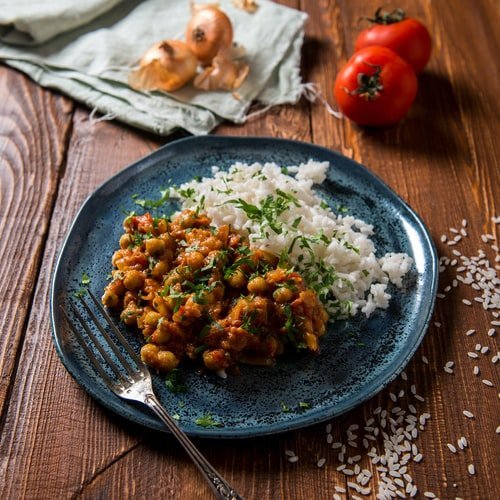Whether they are referred to as chickpeas or garbanzo beans, these small beige-colored gems are becoming increasingly popular. There are countless ways to incorporate chickpeas into delicious meals, from pizza to flour, but are chickpeas healthy? Let us investigate!

Nutritional Value of Chickpeas
In a nutshell, chickpeas are nutritious. Indeed, chickpeas are nutritional powerhouses! These edible seeds are also known as legumes or pulses. They are produced by flowering plants in the Fabaceae family. Lentils, peas, and peanuts are also nutritional powerhouses in the same family. These plants are well-known for their high protein and fiber content, as well as their concentration of essential vitamins and minerals. The following is the nutritional information for one half cup of cooked chickpeas:
- 194 calories
- 8g protein
- 24g carbohydrate
- 9g fat
- 7g fiber
- 36mg folate
- 250mg potassium
- 2.5mg iron
Health Benefits of Chickpeas
What role do all of these nutrients play in maintaining good health? To begin, let us discuss fiber. A half cup of cooked chickpeas contains an impressive 7 grams of dietary fiber. Fiber is a nutrient that has been shown to benefit both the gut and the heart. Are you looking for a filling meal? Include chickpeas! A half cup of cooked chickpeas contains 8 grams of protein, which can help prevent overeating, making them an excellent strategy for weight management. Additionally, unlike meat, you will avoid the saturated fat and cholesterol that are frequently associated with that protein. Apart from fiber and protein, chickpeas contain folate, a B vitamin that is required for protein metabolism and cell health and function. A half cup of canned chickpeas contains 36 micrograms of folate, which helps you meet approximately 10% of your daily requirement (400 mcg/day). Not to mention iron! This critical mineral is responsible for oxygen delivery to our brain and muscles. Chickpeas contain non-heme iron; therefore, they should be consumed alongside a source of vitamin C to maximize absorption.
Canned or Dried Chickpeas
Fantastic news! Chickpeas, both canned and dried, are nutrient-dense! When purchasing canned varieties, look for those that state “no added salt” or “low sodium.” Beans are generally inexpensive, but dried beans are frequently less expensive and also more flavorful than canned beans. How? Because aromatics such as onions, garlic, and other herbs and spices can be added while they cook. Are you afraid to give it a try? This guide will demonstrate how to cook dried beans.
Chickpeas Prepared in Various Ways
Tessa Nguyen, RD, LDN, a chef and dietitian, concurs that chickpeas are an excellent ingredient to keep on hand. “They’re a cost-effective, versatile ingredient that can be used in a wide variety of dishes and cuisines,” she explains. Nguyen is all about roasting when it comes to enjoying them! “I enjoy roasting them in a little olive oil and seasonings. They’re a crunchy snack that I enjoy eating on their own or packing in my bag as an on-the-go snack. ” Apart from snacking, chickpeas can be incorporated into a variety of your favorite dishes. They make an excellent addition to salads, are delectable when smashed on toast, and add an extra dimension of flavor to soups, stews, and chilis. Are you looking to satiate your sweet tooth? Chickpeas can be of assistance!

